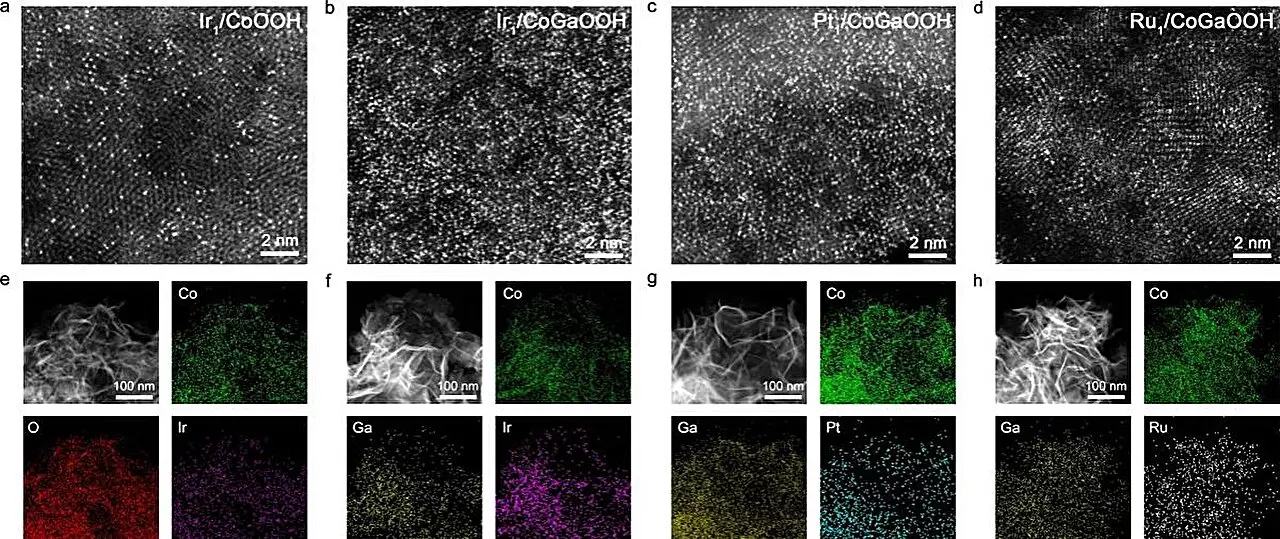The quest for sustainable energy solutions has never been more critical. As the world grapples with climate change and the pressing need for energy security, hydrogen energy emerges as a beacon of hope. Known for its green credentials and high calorific value, hydrogen has the potential to revolutionize the energy landscape. A significant breakthrough in this field involves the production of hydrogen through electrochemical water splitting, a method that has gained considerable traction in recent years. Nonetheless, this process faces challenges, primarily due to the sluggish kinetics of the oxygen evolution reaction (OER). In recent research spearheaded by Professor Bao Jun at the University of Science and Technology of China, innovative advancements have been made in the realm of OER catalysis, particularly through the use of high-density single-atom catalysts (SACs).
Electrochemical water splitting entails two critical half-reactions: the hydrogen evolution reaction (HER) and the oxygen evolution reaction (OER). While considerable progress has been made in enhancing hydrogen production through HER, OER has often lagged due to its inherently slow kinetics. The anode, where OER occurs, typically requires a catalyst to accelerate the reaction. Traditional catalysts, while effective, can suffer from inefficiencies that hinder overall energy conversion. This is where the breakthrough involving cobalt-based, oxide-supported Ir single-atom catalysts aims to make a significant impact. By focusing research efforts on OER catalysts, the team led by Prof. Bao Jun has provided a clearer path toward more efficient hydrogen production.
Single-atom catalysts have emerged as powerful tools in electrochemistry due to their unique properties. The performance of these catalysts is heavily influenced by the density of single atoms within the catalyst structure. A higher density of atoms does not merely increase the number of active sites; it also fosters a phenomenon known as neighboring synergy. This synergy arises when the proximity of single atoms alters the adsorption characteristics of reaction intermediates, thus enhancing reaction rates. Intriguingly, the presence of multiple nearby single atoms can lead to cooperative effects that significantly boost catalyst performance. Therefore, optimizing the arrangement and density of single atoms is vital to maximizing the efficiency of the oxygen evolution reaction.
To enhance the catalytic performance of Ir single-atom catalysts, the research team introduced gallium (Ga) into the cobalt-based oxide lattice. This strategic move was aimed at modifying the electronic environment of the anchoring sites for single atoms. The result was a substantial improvement in the bonding strength between oxygen defect sites and single-atom precursors. By precisely crafting an arrangement of high-density SACs, the researchers were able to evaluate the impact of these neighboring synergetic interactions on catalytic efficiency. Such focused efforts not only increase the quantity of available reaction sites but also unlock pathways to stabilize otherwise reactive intermediates in the OER.
The efficacy of the developed catalyst—designated as Nei-Ir1/CoGaOOH—was rigorously tested, revealing impressive characteristics. It demonstrated a low overpotential of merely 170 mV at a current density of 10 mA cm-2, alongside unparalleled durability that extended beyond 2000 hours. In practical applications, the catalyst showcased stability while operating at a current density of 1 A cm-2 in alkaline environments for over 50 hours. The research team employed in situ Raman Spectroscopy, confirming that the structural integrity of the catalyst remained intact during OER, thereby adding to the credibility of their findings.
Further investigations into the mechanisms of the catalyst’s enhanced performance revealed that the key factor was not merely the improvement in the electronic structure of active sites but rather the neighboring synergetic interactions created by the dense assembly of single atoms. These interactions facilitated stabilizing effects on critical intermediates, effectively lowering energy barriers for the reactions involved in OER. The formation of additional hydrogen bonding interactions with the *OOH intermediates further minimized resistance in the catalytic process, elucidating why the catalyst operates so efficiently.
This research represents a notable advancement in the development of electrochemical OER catalysts. The insights gained from the interaction dynamics of high-density single-atom catalysts offer a promising direction for future research endeavors aimed at enhancing hydrogen production technologies. As we continue to confront the challenges posed by the global energy crisis, advancements in catalysis such as those reported can lead to more efficient and sustainable hydrogen energy solutions, underscoring the exciting potential of this clean energy source. The road ahead looks promising, with the capacity for innovative materials and strategies to reshape our energy landscape.


Leave a Reply